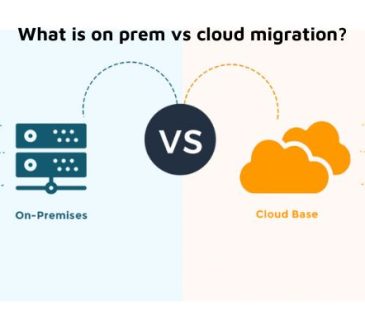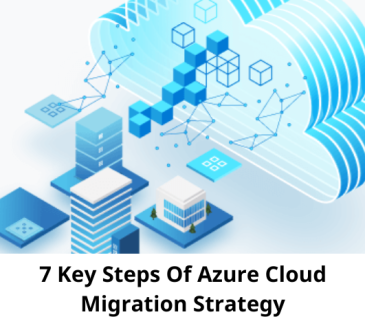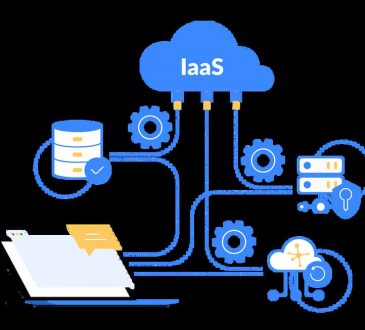
Cloud Data Migration is the process of moving digital assets including IT resources, data, and applications to the cloud. Put simply, cloud data migration is the process of transferring cloud migration tools as well as information from an older infrastructure to a newer infrastructure. This process is typically carried out on cloud-based infrastructure made available by open-source providers such as Google Cloud migration, AWS migration, but also Microsoft Azure.
Cloud data migration has several advantages, including rapid deployment, pay-as-you-go pricing, unlimited scalability, smooth upgrades, lower infrastructure and IT costs, and faster innovation. As more businesses migrate to the cloud, migration processes become increasingly common as businesses switch between cloud providers.
Contents
What Exactly Is Cloud Data Migration?

Cloud data migration is the process of transferring data storage as well as applications to the cloud. Consolidating and moving data workload from a cloud data warehouse to legacy on-premises data warehouses may be part of a migration initiative. It may also necessitate the creation of new cloud data warehouses as well as data lakes. Or perhaps it employs a hybrid cloud data management solution that combines the two.
The Advantages of Cloud Modernization
Cloud data migration allows you to modernize your infrastructure, allowing your organization to reduce migration time, costs, and risk while also accelerating time to value.
You can do the following by migrating to the cloud:
- Ingest almost any type of data ( unstructured, structured, and semi-structured) and handle large amounts of information in less time.
- Fulfill changing business needs as well as unpredictable demands by scaling elastically and quickly.
- As you retire your on-premises data centers, you can save money on IT maintenance.
- With a unified data infrastructure, you can streamline data analytics while also lowering costs.
- Future-proof your data infrastructure with a flexible, sustainable, and agile data foundation that allows you to use data at your own pace.
Data should be made available to anyone who wants to use it. Provide intuitive, self-service tools to virtually any data practitioner to increase efficiency but also accelerate time to insight.
Define your desired future outcome
Don’t work backward with a vendor to fit your research needs into their cloud data lake, cloud data warehouse, or both. Instead, start with identifying your business objectives. Then, select a cloud-native data management system that fulfills your current requirements while also being future-proof. It should discuss your potential data management requirements as your company grows.
It must also be extensible in order to accommodate growth without requiring you to rip as well as replace previous work. The best cloud data management solution must also support multiple clouds. This gives you the freedom to endorse your modernization journey with whichever cloud vendor you prefer.
Keep a record of your data
An intelligent data catalog reveals what data you have, how it’s stored, how it is presently used, and how it should be protected. This also makes it easier to locate as well as access specific data when needed. As a result, you’ll be capable of rapidly recognizing high-value data as well as prioritizing its migration to your new cloud database system or data lake. This enables your data consumers to begin using the new technology immediately. Simultaneously, your development team can replenish data without interruption.
Cleanse and standardize your data

Before migrating to the cloud, consider data quality and governance. This will reduce the amount of preparation work required for cloud analysis. Look for a comprehensive set of pre-configured data quality rules. These should allow you to cleanse, standardize, and enhance all data without requiring any coding. This makes sure that your data users can have confidence in the information they receive and analyze.
Keep track of your metadata
Metadata management is critical to automating the data movement process into your cloud data warehouse as well as a data lake. It makes it easier to discover, tag, relate, and provision your data. Your cloud data management solution must collect metadata from all of your enterprise systems in order to be effective.
Technical, business, operational, infrastructure, and usage metadata are all included, ranging from database schemas as well as glossary terms to volume metrics but also user access patterns. Furthermore, your solution should carefully select your metadata and add business context to it. It ought to be capable of deducing data lineage and entity relationships.
Why Is Cloud Migration Important?
Migration to the cloud can have a significant impact on the company’s overall success. This includes faster delivery times, reduced total cost of ownership, and increased opportunities for innovation. Incorporating the cloud increases the company’s agility and flexibility, both of which are required to remain on top of evolving market developments and customer needs.
Businesses that have performed data migration are keeping up with current consumer demands and have quickly shifted to a new way of working – remote work.



